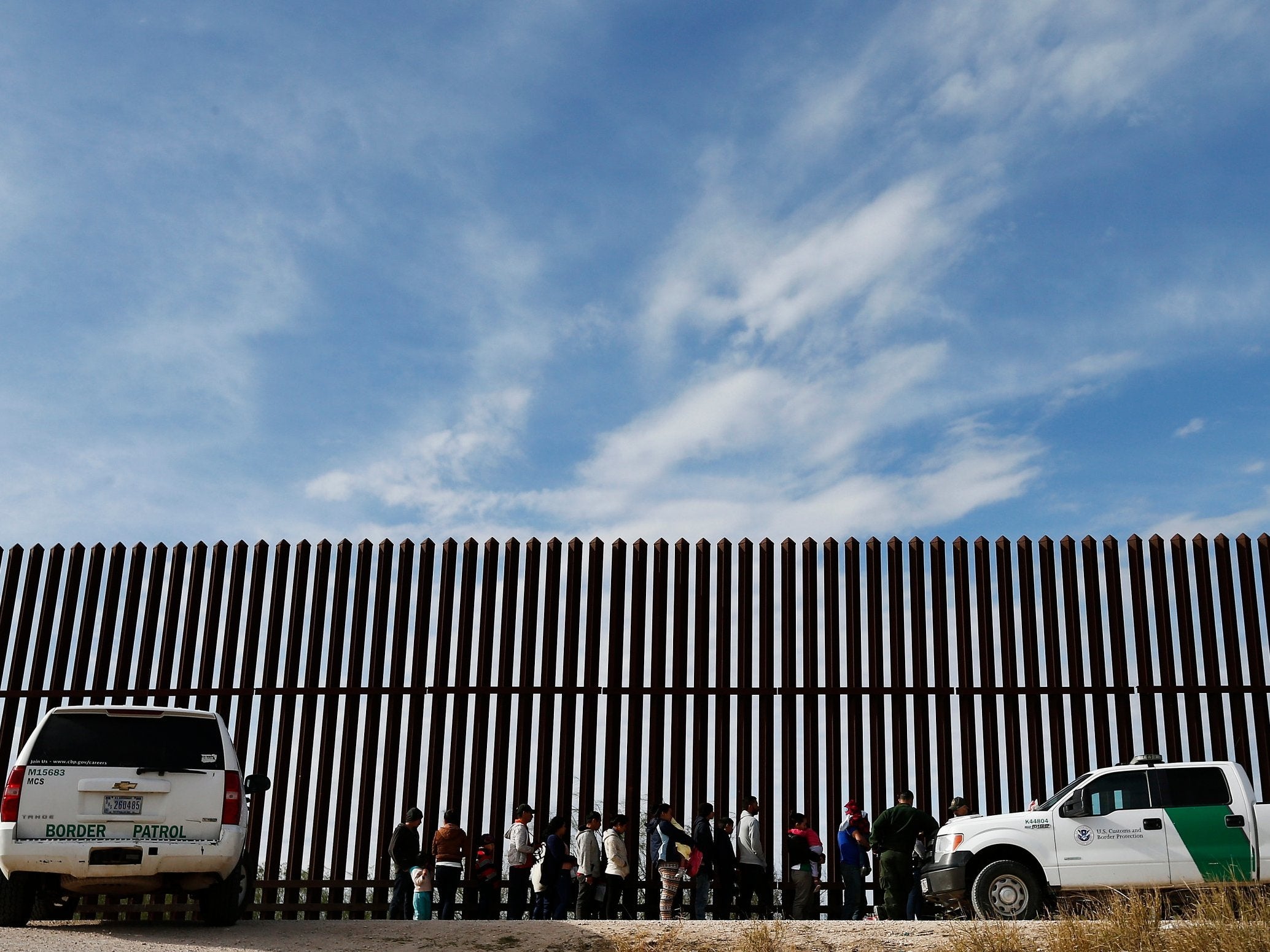‘What are we going to do if they take everything?’: Why Texas landowners are fighting Trump’s border wall
‘This is a complete b******t state of emergency,’ one south Texas landowner tells


Your support helps us to tell the story
From reproductive rights to climate change to Big Tech, The Independent is on the ground when the story is developing. Whether it's investigating the financials of Elon Musk's pro-Trump PAC or producing our latest documentary, 'The A Word', which shines a light on the American women fighting for reproductive rights, we know how important it is to parse out the facts from the messaging.
At such a critical moment in US history, we need reporters on the ground. Your donation allows us to keep sending journalists to speak to both sides of the story.
The Independent is trusted by Americans across the entire political spectrum. And unlike many other quality news outlets, we choose not to lock Americans out of our reporting and analysis with paywalls. We believe quality journalism should be available to everyone, paid for by those who can afford it.
Your support makes all the difference.For five generations Yvette Gaytan’s family has lived on a piece of desert land that juts up against the US-Mexico border where Donald Trump now wants to build his border wall.
Despite the president’s claim of an emergency at that border, the 37-year-old feels perfectly safe there in southern Texas where mesquite trees mix in with cacti. She does not see migrants make their way out of the waters of the nearby Rio Grande river and through her yard into America. There are no smugglers at her doorstep.
Instead, the biggest threat she sees to her family’s home and heritage is coming from an American government keen on fulfilling the campaign promise of a man who regularly casts migrants as criminals. She says the government has already already asked for permission to survey her property for the wall, which she believes would either destroy the home her late father built, or leave it cut off from the rest of the country she belongs to.
“In a way, my dad always said he would never move from here. He never did. He never wanted to go anywhere else,” she says of the land where both her mother and father lived for much of their lives. “This is where he wanted to stay. He wanted to be buried in the backyard.”
“This is our last tether, our last anchor to them,” she says.
Ms Gaytan is among more than 100 private landowners along the US-Mexico border who say they have received letters from the US government informing them their parcels of property are needed to build the wall. The letters are the first step for the government to seize land from private owners.
But Ms Gaytan, like many others, plans on fighting back, and does not believe the wall is necessary to keep her quiet corner of the US safe.
Because it already is safe, she says. While Mr Trump warns of human trafficking, her children often hike down on their own from the bluff where her family’s home was built, more than 50 years ago, to the Rio Grande, hoping to catch rainbow trout and other fish native to those waters. Even though the president warns of gang members and “bad hombres” crossing into the US, Ms Gaytan leaves her purse in her truck overnight and does not lock the front door.
“There’s a lot of uncertainty,” she says. “What are we going to do if they take everything?”
The kind of fight Ms Gaytan has found herself in is nothing new to the residents along the Rio Grande, however.
Since 2006, when the Secure Fencing Act authorised roughly 700 miles worth of border fencing to be constructed during the administration of president George W Bush, the US government has forced private property owners off their property, leading to dozens of lawsuits, some of which are still pending.
This policy of seizing private land continued during the Obama administration – and now into the Trump administration, which has been markedly more aggressive on the issue.
But the situation in 2019 is somewhat different. Much of the land where fencing was built during that previous effort was erected on federally owned lands in Arizona, California and New Mexico. So, the landowners in Texas have some bargaining chips, even if experts say border fencing has often qualified as “public use” in previous court cases where landowners challenged the government’s use of eminent domain, which allows the state or federal government to take private property for public use while requiring “just” compensation to be given to the original owner.
Mr Trump, who once attempted to use the power of eminent domain in the 1990s to kick an elderly woman off a property adjacent to his hotel in New Jersey to build a parking lot, hopes to negotiate deals with private landowners along the border, but the lawsuits popping up show that won’t be so easy.
“What we’re doing with eminent domain is, in many cases, we’ll make a deal up front. We’ve already done that. The secretary has done a lot of that,” the president told reporters in January without providing further details.
He continued: “And if we can’t make a deal, we take the land and we pay them through a court process. Which goes actually fairly quickly. And we’re generous. But we take the land. Otherwise you could never build anything. If you didn’t use eminent domain, you wouldn’t have one highway in this country. You have to use eminent domain.”
US Customs and Border Protection, which along with the US Army Corps of Engineers sent the letters to property owners, did not respond to a request for comment.
Legal experts say judges are often quite deferential to the government when it comes to things like border walls.
“What it’s going to come down to is how deferential the court will be to the finding of the federal government that this is for a public use,” says Michael Wolf, a professor and expert in eminent domain at the University of Florida.
“Public use is very broadly defined, and the protection of America from people we don’t want coming across the border would certainly be to the public benefit.”
The government knows that, right or wrong, forcing people off their land can cause major issues. A 2009 report compiled by the Department of Homeland Security’s inspector general, for instance, found the legal headaches lead to delays and increased costs.
“Gaining access rights and acquiring non-federal property has delayed the completion of fence construction and may increase the cost beyond available funding,” that report said.
Either way, that means the US court system could soon be clogged with hundreds of eminent domain challenges that will then make their way through the system, and could end up in jury trials.
Ricardo Garza, a staff attorney with the Texas Civil Rights Project, says his organisation is reaching out to landowners to help them when the government comes knocking. And they have seen this type of thing before.
“In southern Texas this stuff has been going on for a long time,” Mr Garza says. “It has been a bipartisan issue and it’s unfortunately treating the border as a sacrifice zone.”
Other groups or landowners that have sued the government or are facing eminent domain claims from the government in recent months includes a Catholic chapel in Brownsville. And birdwatching groups who have sued say the border would prevent wildlife from getting to the river and would dehydrate vulnerable populations – or drown them when flooding occurs.
“If you have 16-to-18ft vertical concrete walls … nothing can get out and noting can pass,” Jim Chapman, the president of the Frontera Audubon Society says, noting other damaging features would include the clearing out of habitat within 150ft of the fence.
At the National Butterfly Centre in Mission, Texas, Marianna Trevino-Wright says she came across federal contractors last year while they were already beginning to survey the land and cut down trees. She encountered them months before appropriations to build any new wall were approved in Congress, she says, and was then visited by uniformed border officers who disputed that she had seen federal contractors on her land.
“I encountered five workers, three with chainsaws, one with a bush hog,” Ms Trevino-Wright says of her initial encounter.
Ms Trevino-Wright says that, like Ms Gaytan’s border-adjacent property, there is little or no migrant traffic coming through. Things are safe, she says. So much so that the centre hosts an annual camp out for Girl Scouts.
“Little girls with their troop leaders come and spend the night outdoors here,” she says. “This is a complete b******t state of emergency.”
Ms Gaytan, the woman whose family has lived in their home on the border for five generations, says she supports border security but does not think a wall would be at all effective.
She has seen for herself, and heard the stories of walls only providing temporary barriers until criminals figure out how to get through them. Or over them. Or under them.
“A wall is just literally an illusion of safety. It’s like my fence. Yes, I have a fence around my house. It’s for the illusion of privacy, not security, because that is not going to stop anybody from coming in,” she says.
“If they want to break into my house, if they want to steal something, they’re just going to go ahead and do it.”
Join our commenting forum
Join thought-provoking conversations, follow other Independent readers and see their replies
Comments